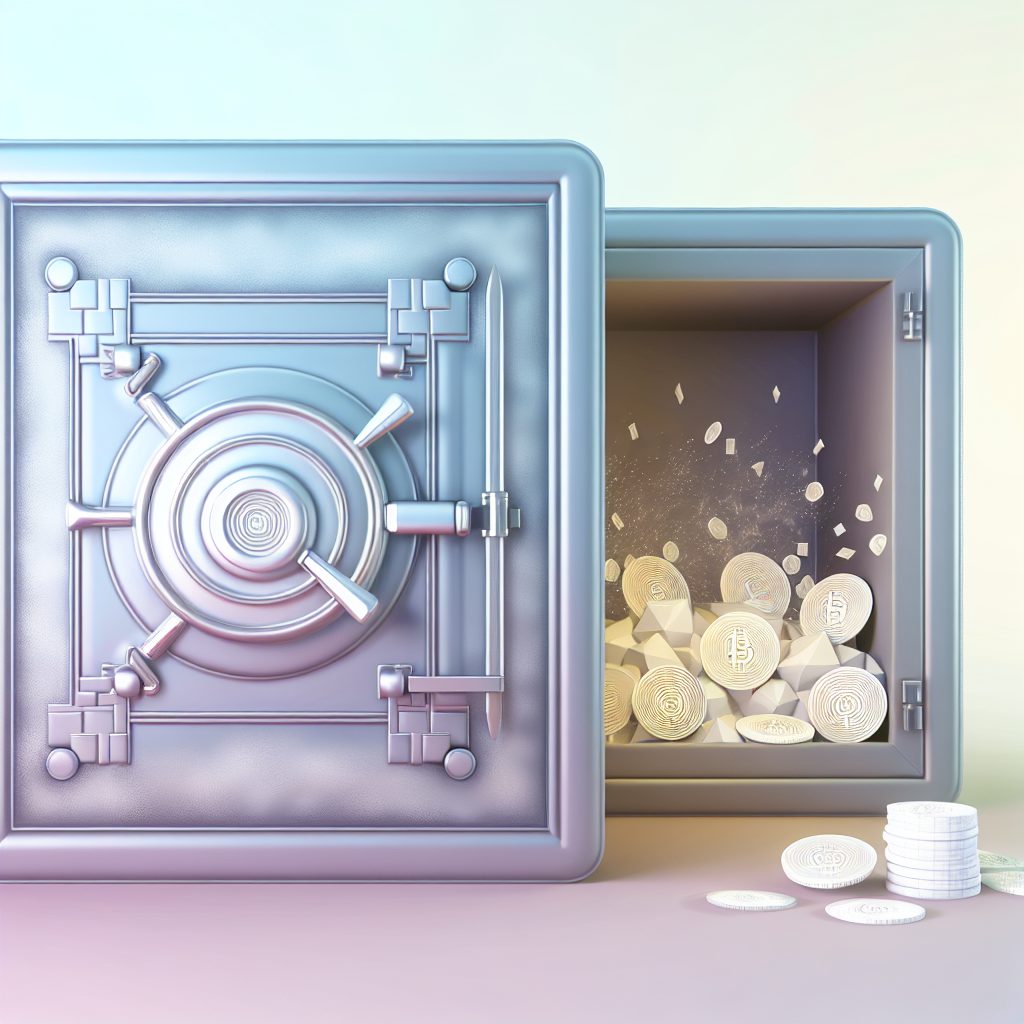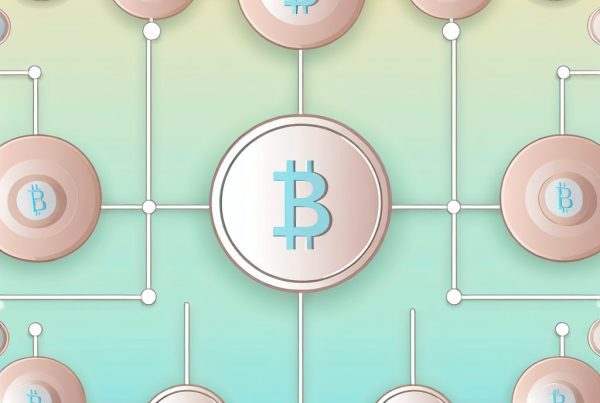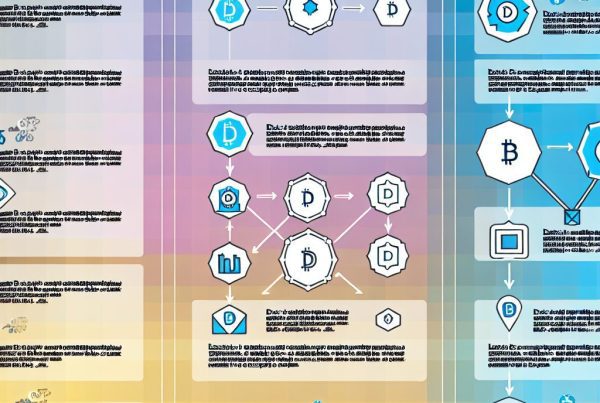Understanding DAO Treasuries in the Cryptocurrency Landscape
The rise of decentralized autonomous organizations (DAOs) has transformed the way communities and projects manage their resources in the cryptocurrency industry. At the heart of these organizations lies the concept of a DAO treasury, a critical component that governs the financial health and operational capabilities of a DAO. This article delves into what a DAO treasury is, its significance, how it operates, and its implications for the future of decentralized governance.
What is a DAO?
A decentralized autonomous organization (DAO) is an entity represented by rules encoded as a computer program that is transparent, controlled by organization members and not influenced by a central government. DAOs are designed to be fully autonomous and decentralized, allowing for collective decision-making and resource management.
DAOs leverage blockchain technology to facilitate governance, enabling members to vote on proposals and changes. This structure promotes transparency and accountability, as all transactions and decisions are recorded on the blockchain.
Defining a DAO Treasury
A DAO treasury refers to the pool of funds and assets that a DAO manages. This treasury is crucial for funding projects, paying contributors, and maintaining the operational integrity of the organization. The treasury can consist of various assets, including cryptocurrencies, tokens, and even NFTs, depending on the DAO’s focus and objectives.
The Importance of a DAO Treasury
The treasury serves several vital functions within a DAO:
- Funding Projects: The treasury provides the necessary capital to fund initiatives, development, and community projects.
- Incentivizing Participation: Funds can be allocated to reward contributors and incentivize community engagement.
- Governance: The treasury’s management is often subject to community voting, ensuring that members have a say in how funds are utilized.
- Stability: A well-managed treasury can provide financial stability, helping the DAO weather market fluctuations.
How DAO Treasuries Operate
DAO treasuries operate through smart contracts, which automate the management of funds based on predefined rules. Here’s a breakdown of how they function:

1. Fund Allocation
Members of the DAO propose how funds should be allocated. This can include funding for development, marketing, or community initiatives. Proposals are typically submitted through a governance platform, where members can discuss and vote on them.
2. Voting Mechanism
Voting is a core aspect of DAO governance. Members use their tokens to vote on proposals, with the weight of their vote often proportional to the number of tokens they hold. This system ensures that those who have a greater stake in the DAO have a more significant influence on decisions.
3. Transparency and Accountability
All transactions involving the treasury are recorded on the blockchain, providing transparency. Members can track how funds are spent and ensure that the treasury is managed responsibly.
4. Treasury Management Strategies
DAOs may employ various strategies to manage their treasuries effectively. This can include:
- Diversification: Holding a mix of assets to mitigate risk.
- Yield Farming: Engaging in yield farming to generate additional income from the treasury.
- Liquidity Provision: Providing liquidity to decentralized exchanges to earn fees.
Real-World Applications of DAO Treasuries
Several DAOs have successfully implemented treasury management strategies that highlight the potential of this model:
1. MakerDAO
MakerDAO is one of the most prominent examples of a DAO treasury in action. It manages a treasury that backs the DAI stablecoin, ensuring its stability and liquidity. The treasury is funded through various collateral types, and governance token holders vote on risk parameters and collateral types.
2. Gitcoin
Gitcoin is a platform that funds open-source projects through its DAO treasury. The treasury is used to support developers and projects that contribute to the Ethereum ecosystem. Gitcoin employs a quadratic funding model, where contributions are matched based on community votes, ensuring that funds are allocated to projects that resonate with the community.
3. Yearn Finance
Yearn Finance utilizes its treasury to invest in various DeFi protocols, generating yield for its community. The treasury is managed by governance token holders who vote on investment strategies, ensuring that the community has a say in how funds are utilized.
Challenges Facing DAO Treasuries
While DAO treasuries offer numerous benefits, they also face several challenges:
1. Governance Risks
Decentralized governance can lead to decision-making paralysis if members cannot reach a consensus. Additionally, governance attacks, where malicious actors acquire a significant number of tokens to influence decisions, pose a risk to the integrity of the treasury.
2. Market Volatility
The value of assets held in a DAO treasury can be highly volatile, impacting the financial stability of the organization. Effective risk management strategies are essential to mitigate this risk.
3. Regulatory Uncertainty
As DAOs operate in a relatively unregulated space, they may face legal challenges regarding their structure and operations. This uncertainty can impact treasury management and funding strategies.
Future of DAO Treasuries
The future of DAO treasuries looks promising as more organizations adopt decentralized governance models. Innovations in treasury management, such as automated investment strategies and enhanced voting mechanisms, are likely to emerge. Additionally, as regulatory frameworks develop, DAOs may find new ways to operate within legal boundaries while maintaining their decentralized ethos.
FAQs about DAO Treasuries
What assets can be held in a DAO treasury?
A DAO treasury can hold various assets, including cryptocurrencies, tokens, NFTs, and even fiat currencies, depending on the DAO’s objectives and governance structure.
How are decisions made regarding treasury funds?
Decisions regarding treasury funds are typically made through a voting process where members propose allocations and vote based on their governance tokens.
What happens if a DAO treasury runs out of funds?
If a DAO treasury runs out of funds, it may struggle to support its initiatives and operations. This situation can lead to a loss of community trust and participation.
Can a DAO treasury be hacked?
Like any blockchain-based system, DAO treasuries can be vulnerable to hacks if security measures are not adequately implemented. It is crucial for DAOs to prioritize security in their treasury management strategies.
Conclusion
DAO treasuries represent a revolutionary approach to managing resources within decentralized organizations. By enabling community-driven decision-making and transparent fund management, they empower members to shape the future of their projects. As the cryptocurrency landscape continues to evolve, understanding the intricacies of DAO treasuries will be essential for anyone looking to engage with decentralized governance.
For the latest updates on cryptocurrency news and price tracking, consider visiting Bitrabo. Stay connected with me on social media: follow me on X, Instagram, and Threads.
Disclaimer: This article is for informational purposes only and should not be considered financial advice. Always conduct your own research before making investment decisions.
The Crypto Watchlist of the Week 🔎
Subscribe to receive expert-curated projects with real potential—plus trends, risks, and insights that matter. Get handpicked crypto projects, deep analysis & market updates delivered to you.


